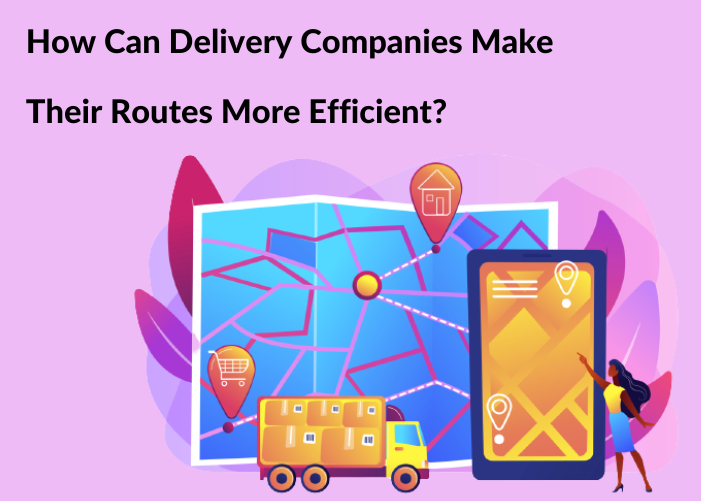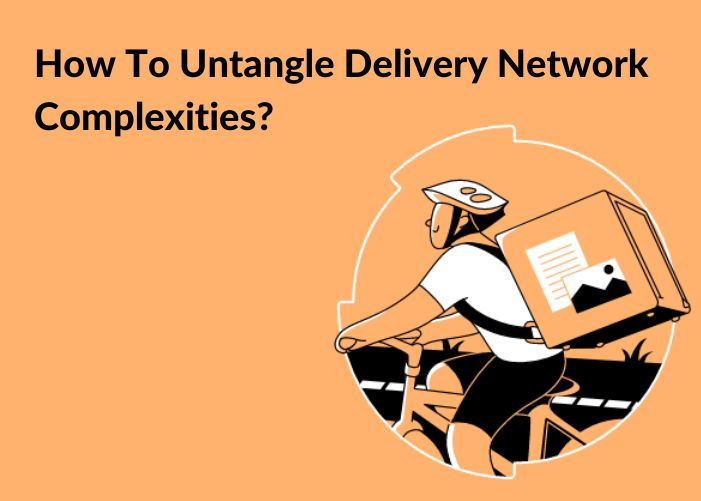1) Why is routing efficiency critical-2-success for today’s delivery companies?
Powered by e-commerce giant Amazon, this millennium saw the arrival of hitherto unthinkable delivery times! Same-day, 24-hour, and even 15-minute delivery for groceries and medicines!
This has raised the bar unchangeably; customers now consider such delivery times the new standard and are unwilling to settle for anything less. As a result, smaller (but, delivery-based) establishments and companies have been forced to improve their delivery efficiency. If not, well, they run the risk of going out of business because their customers will go elsewhere. Delivery efficiency really has become so crucial!
~~ Route-optimization is a critical part of overall operational efficiency and profitability. If done correctly, your delivery-costs will reduce. And, since you can complete more on-time customer orders, your revenue will increase. ~~
2) Common problems that affect routing efficiency
Before outlining strategies for routing efficiency, we must also understand what creates such inefficiencies, to begin with.
- Old manual-methods of route-planning: Today’s delivery operations are complex, global operations that run 24*7. Factors like delivery windows, package size, and weight, available resources (drivers, vehicles), number of drop-offs, warehouses in use (etc.) are just some of the many elements that need to be factored in. Add last-minute changes (e.g. changed drop-off location) and you’ll realize why manual methods just won’t suffice.
- Outdated technology: Extending the point above, simply “using technology” isn’t good enough! Outdated tech will keep you in the same spot i.e. inefficient and unprofitable operations. Today, entire supply chains are being digitized and automated. Your competitors will already be using the latest cutting edge-tech like automated delivery-software
- Poor utilization of available resources: Resources are costly and limited. Therefore, making the best use of them is core to an efficient, profitable routing schedule. For example, simply sending out fleet vehicles to deliver parcels as they are received in your warehouse just isn’t an efficient enough use of expensive resources.
~~ Common trends show that 10% of consumers prefer Same-Day delivery. 20% need Next-Day while 40% are okay with 2-Day delivery. ~~
3) Top 8 Ways to Improve Delivery Efficiency
Well, business objectives of growing topline, reducing cost, and increasing margins will come by successfully completing more on-time deliveries. For that, here are some tips:
- Use a modern, automated online dispatch-software: These software systems balance out all the (numerous!) variables that affect route optimization, including the number of drops, reverse pickups, traffic, weather, driver availability and capability, fleet vehicles available (etc.). The software is extremely flexible and can also make last-minute adjustments in real-time (e.g. rescheduling a drop-off to the next day), which is important in maintaining efficiency.
Make sure you feed your relevant data, processes, objectives, and restraints into the software. The software’s algorithms can also be customized to meet the needs of your business. Over time, you will learn to use it to achieve maximum routing efficiency.
- Real-time notifications: Since the dispatch software is enabled with GPS, live communication between drivers, central teams, and the end-customer, be sure to send real-time notifications to your customers, especially in case of delays or res-schedule. This helps manage customer anxiety about their orders and keep them suitably happy.
- Complete important orders first: Across industries, Business Planning is about managing Demand vs. Supply. There will be periods of high demand (e.g. holidays and festivals) when pressure is higher than normal. Under such a scenario, you must have the plan to prioritize orders i.e. those that are urgent, have paid a special delivery fee, or that may particularly impact your business. Critical supplies (like medicines) will also generally take precedence.
- Monitor driver-performance: As mentioned earlier, you must use the routing software to your best advantage by feeding (and customizing) it with your individual processes and targets. Included within this is setting driver targets (e.g. following prescribed schedules and routes, completing on-time deliveries, safe driving protocols, fuel consumption) and tracking their performances against it. This helps in maintaining transparent and fair practices. This is an ongoing task and you should constantly chip away at improving existing performance levels.
Other variables, such as driver break times and days of rest in between trips, must also be factored in for correct expectations. Otherwise, you will be setting schedules/targets for drivers that aren’t realistic. It would then appear as though your drivers aren’t keeping up with the benchmarks that are expected of them.
~~ Consider this: your drivers have just left based on the daily-route you assigned. But, you now need to add an urgent delivery! A last-mile delivery software can easily adjust and include this new delivery while ensuring that the rest of the daily schedule isn’t compromised. ~~
- Planning ahead: As mentioned above, planning ahead helps you to prepare for peaks and valleys in demand times. This helps in tackling the extra pressure that your logistics and resources are subjected to during periods of high demand. Similarly, you could offload some of your costs (e.g. number of contracted drivers) during slack periods.
- Deploy the correct type of transportation based on locations: Use modes of transportation based on areas i.e. a bike in congested city areas, mini-trucks for longer distances, or trucks for heavy cargo across cities. Check for drop density, urbanization, parking availability (etc.) while setting up delivery times (and, costs).
- Use an elaborate warehouse network: Order-fulfillment locations are critical nodal points of your last mile delivery and logistics. Carefully plan their locations, sizes, and capabilities (etc.). Having an elaborate and optimally spread network of warehouses is key because you want your inventory to be stored as close as possible to the end customer. This goes a long way in shortening delivery times.
- Use data-analytics: It isn’t possible to achieve 100% optimization across all your routes right from the first day. Also, don’t forget that the route-optimizer software is dependent on data. The more you feed it with data/information, the better it will be able to analyze all the numerous factors that affect route optimization. Therefore, be sure to collect as much data from your routes. For example, at which point in a route does the traffic congestion start? Any particular times? How long does the congestion last? Are there any alternate routes during that time?
Such insight enables logistics teams to improve their routing efficiency. Over time, it becomes optimized for all possible objectives and variations.
Conclusion: As is evident, delivery software is critical for route optimization. Without it, delivery companies will be unable to achieve delivery efficiency and keep customers happy.




